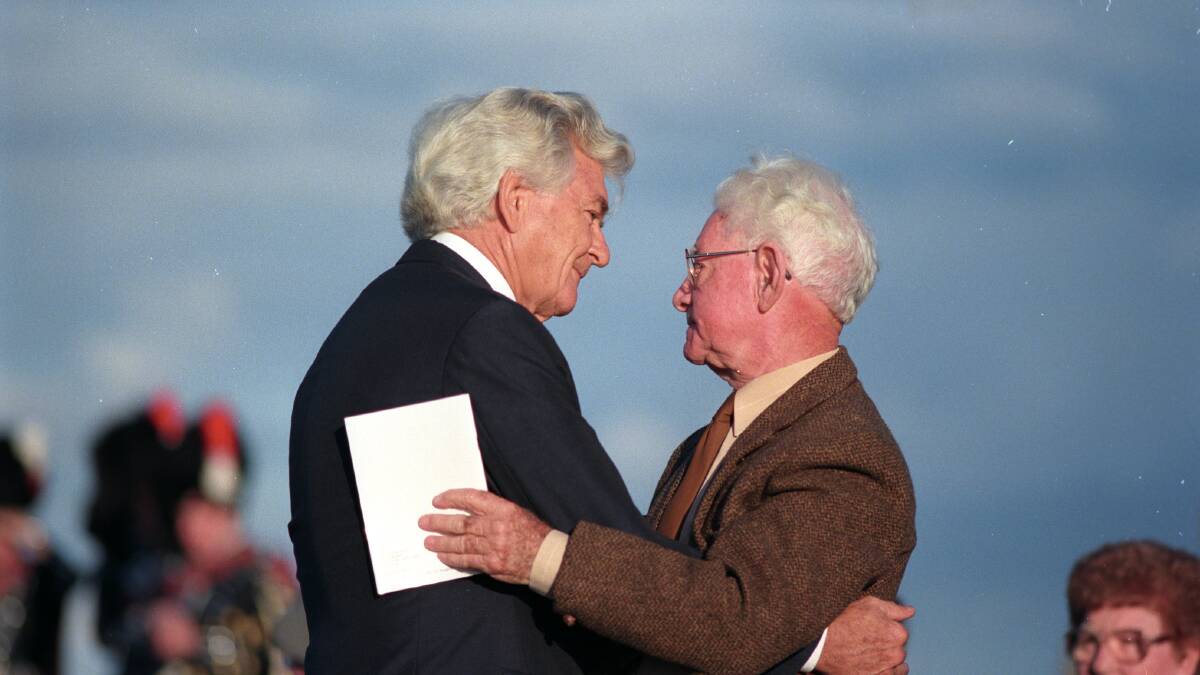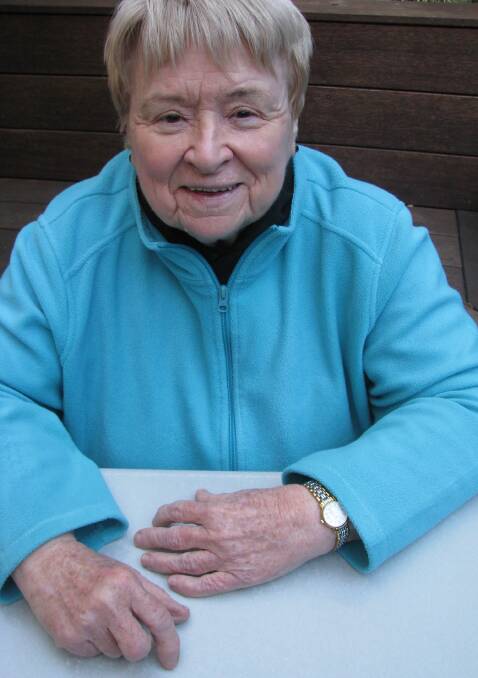
EVEN in death, Coalfields legend Jim Comerford casts a long shadow.
Subscribe now for unlimited access.
or signup to continue reading
The northern mining leader rose from pit boy to become a trade union leader, political activist, Labor icon and writer. There’s a memorial wall named in his honour at Aberdare today listing more than 1500 miners who have lost their lives on northern coalfields over more than a century.
A special bronze bust of the Coalfields icon was also unveiled there in 2007 to mark his memory.
James Comerford died in 2006, aged 93 years, and yet it’s taken until now for a serious biography to take shape and be ready to submit to a publisher.
Why so long?
His Hunter Valley biographer Barbara Heaton believes it’s not really surprising when you look into it.
He had more sides than a Rubik’s Cube. He was a complicated man. I believe Jim saw the world through the prism of his Marxism.
- Author Barbara Heaton talking about Jim Comerford
“You’d think others, closer to him, would by now have produced his biography, but they haven’t, “ she says. ”That may be because perhaps they were too close to him [and knew his faults] to produce one. Me, I’m an outsider, and I think that’s the reason.
“I’m still gob-smacked by his obituary coverage. The Newcastle Herald, for example, knowing he was sick must have been preparing stories for days. There’s was even front page colour artwork. I don’t think the Queen would get as much coverage if she died tomorrow.”
Heaton said Comerford was a giant of his era, but a fuller, more balanced pen portrait needed to be published.
“He had more sides than a Rubik’s Cube,” she says. “He was a complicated man. I believe Jim saw the world through the prism of his Marxism.”
Since 2011, Heaton has been carefully gathering information on the very public figure of Jim Comerford who retired in 1973 as the miners’ northern leader, having been a federation official for 31 years.
“Obviously I do have a personal life so my work wasn’t full time, but I wanted to get the story right,” Heaton says. “But I stress my forthcoming book is not just about Jim, but about the Coalfields itself as well and the [tumultuous] times he lived through. Look at the death rate in mining and the solidarity the families show to survive.

“I decided to keep writing after visiting a close relative for a possible interview who greeted me at the door not with a ‘hello’, but with the warning: ‘I’ve been to see a solicitor to stop you writing this book’. I thought, ‘that’s a mistake to talk to me like that’.”
The sixth-generation Novocastrian writer, who hails from a Lambton mining family, felt she was well placed to document Comerford’s amazing story while people who knew him best, both friends and foes, were still around to help.
She said Comerford left school at age 13 to go into the mines, personally experiencing the terrifying Rothbury Riot when police fired on thousands of unarmed, protesting miners locked out of work in 1929.
“These days I think he would be diagnosed with post traumatic stress,” she says.
In 1942, Comerford became the youngest person ever elected to the miners’ central council. He became known as a tough but fair union negotiator with “a mind like a steel trap”. He also had a “carefully crafted persona,” rising through the mining ranks and later became a well-respected writer and author.
Comerford was also unusual in mining ranks – he was a member of the Independent Order of Rechabites, which forbade drinking liquor.
From her research, Heaton says she believes Comerford privately remained a committed Marxist all his life, striving for social justice to relieve the hardships mining people lived through in the 1930s.
Now, she has a potentially explosive 260-page manuscript almost ready for the publisher with the working title Jim Comerford: Working Class Warrior.
“My earlier possible book title though came from an editorial in the Cessnock paper after Jim’s death which read: ‘Jim Comerford: A secular saint?’
“But I’m sure there’s still more of the story to tell. He was known to be a Communist [in the 1940s and 1950s] and I’ve gained access to his ASIO file where 19 pages are still not available. It’s ridiculous. The NSW [police] Special Branch also claim they don’t have a file on Jim.
‘Well, ‘Hello’, I’ve argued legally that if they didn’t have a file on Jim, they weren’t doing their job’”.
Through his correspondence, Comerford “tipped a bucket on all his enemies”, yet his vital personal notebook kept over decades has now been lost, she claimed.
Political lament
Heaton says Comerford’s biggest disappointment was never being elected to parliament, where the real power to change society lay.
“What set Jim apart from other northern mining leaders was his intellect. Jim also knew how to get on with people, to be a master manipulator even, “ she says.
She said a few insightful Coalfields folk realised there were two clear avenues to improve society and the working man’s life.
“One way was through the union movement and the other was to be elected into parliament,” Heaton says. “And how many northern people have been elected to parliament, both state or federal, would you believe? Try 15, the figure surprised me.”
Heaton says that after conducting her interviews she gained the impression Comerford could be his own worse enemy at times, needlessly alienating friends and even former colleagues.
“One mining man I was told wouldn’t speak to me had tears in his eyes when speaking candidly of Jim’s behaviour on occasion.
“His late wife Mabel was quoted as saying, ‘Where ever Jim went, there was trouble.’”
In 1996, then Australian prime minister Paul Keating praised Comerford when unveiling the Cessnock memorial wall named after him.
“Jim Comerford is quite simply a Labor legend, the embodiment of Labor’s greatest ideals of solidarity and the pursuit of justice for working men and women,” Keating said.
Soon after, former prime minister, Bob Hawke launched the mining identity’s first history book, Coal and Colonials.
But things weren’t as they might appear, according to Heaton.
“I did a lot of research going through Jim’s private papers held today in Kurri’s Edgeworth David Museum. While not catalogued or indexed, they give a different view,” she says.
“From his writings, Jim hated Paul Keating with a vengeance. He loathed and detested Keating, believing his actions weren’t of a true socialist and claiming he was more conservative than Liberal party people. He’d also wrote to Bob Hawke after his election saying prime ministers came and went, but that if he’d stayed as ACTU president he could have done a lot of good.
“He also had some very harsh things t say about his own union’s leadership, but ultimately, the good things outweighed the bad he said.”
“He never belittled ordinary people and respected returned servicemen but disliked warmongers and profiteers.”
Biographer Heaton said the picture of Comerford emerging from various sources to her was of a man who improved conditions for miners but could also be unbending, egotisical, very unforgiving, even ruthless who believed “coal companies tell governments what to do”.
In short, he was a man of his times.
Now, one final story. Years ago, when the Commonwealth Bank was being closed in Weston, Jim and some old miners staged a protest sit-in. Refusing to move, police were called and two protestors, including Jim, were taken to cells at Cessnock.
Local MP Bob Brown soon rang to see how his miners were being treated and heard noise in the background. “What’s going on?” Brown asked.
“The police sergeant answering the phone complained Jim and another old miner were telling his young constables stories about the Miners’ Federation and teaching them the union song, Solidarity Forever.
“I want them OUT of here. I want my police station back,” the sergeant yelled. Jim dined out on this story for years, “ Heaton said.

